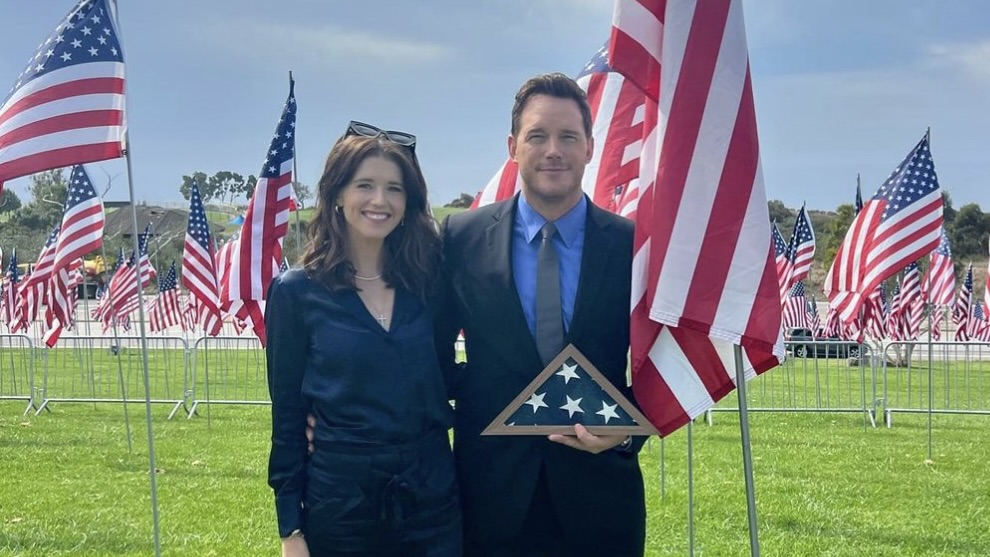In a recent statement that has stirred considerable debate, actor Chris Pratt asserted, “In America, there is one flag and one anthem. PERIOD!” This declaration has sparked conversations about national identity, patriotism, and the evolving nature of American symbols and values. To fully grasp the implications of Pratt’s statement, it’s essential to examine the broader context of American unity and diversity.

Chris Pratt, a well-known actor recognized for his roles in major blockbuster films and television series, made this comment during a period when discussions about national symbols and what they represent have been particularly prominent. His assertion underscores a desire for a singular national identity symbolized by the American flag and the national anthem, reflecting a viewpoint that emphasizes unity and common purpose.
The American flag and the national anthem are potent symbols of the United States, embodying the nation’s history, values, and collective identity. The flag, with its thirteen stripes and fifty stars, represents the union of states and the ideals of freedom and democracy. “The Star-Spangled Banner,” the national anthem, reflects the resilience and spirit of the American people, particularly in its origins during the War of 1812. For many, these symbols are cherished and revered, embodying the essence of American patriotism.
Pratt’s statement suggests a desire for a unified national identity that aligns with these symbols. His perspective seems to advocate for a simplified, singular representation of American identity, contrasting with the complex and often fragmented nature of contemporary American society. This perspective can be seen as an appeal to return to a more straightforward, unifying vision of what it means to be American.
However, this viewpoint is not without controversy. The United States is a nation characterized by its diversity-culturally, politically, and socially. The notion that there is only one flag and one anthem can be seen as an oversimplification of a nation that encompasses a broad spectrum of identities and experiences. For many, American identity is not solely defined by these symbols but also by the diverse and sometimes contentious experiences that shape the country.

Critics argue that Pratt’s statement overlooks the rich tapestry of American life, where multiple voices and perspectives contribute to the national dialogue. The United States has a history of social movements advocating for various causes, including civil rights, gender equality, and LGBTQ+ rights, often using symbols and forms of expression that challenge traditional norms. These movements highlight the dynamic nature of American identity and the ways in which individuals and groups seek to make their voices heard.
Furthermore, the idea of a single, unifying symbol can sometimes be at odds with the need for a more inclusive and pluralistic understanding of national identity. While the flag and the anthem are important symbols, they do not encompass the full range of American experiences and struggles. Recognizing this diversity can lead to a more nuanced and empathetic understanding of what it means to be American.
In the broader context of national discourse, Pratt’s comment reflects a tension between traditional symbols and contemporary social realities. It raises important questions about how nations reconcile their historical symbols with the evolving identities of their people. In a country as diverse as the United States, finding common ground while honoring different experiences and perspectives remains a complex and ongoing challenge.

Ultimately, Chris Pratt’s statement invites reflection on the nature of American unity and identity. It underscores the importance of national symbols while also highlighting the need to engage with the diverse and evolving nature of American society. As the nation continues to grapple with its identity and values, such discussions contribute to a broader conversation about what it means to belong to and participate in the American experience.